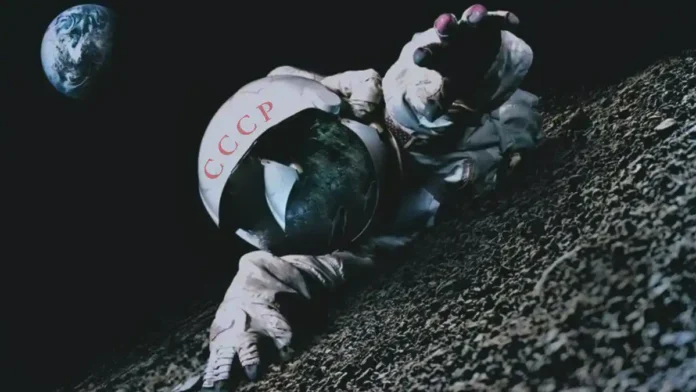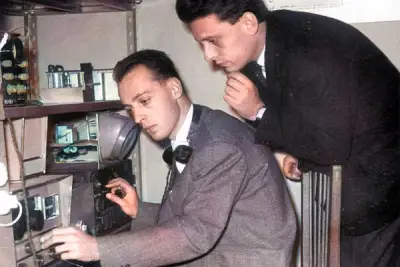During the early stages of the Space Race, a heated competition going on between the United States and the Soviet Union as both nations vied for supremacy in the cosmic domain. However, amid the revelation of the universe’s mysteries through successive missions, rumors circulated about space explorers sent into the skies who never returned. Later the space explorers who never returned were known as the Lost Cosmonauts or the Phantom Cosmonauts. They were a focal point of a conspiracy theory alleging that certain Soviet cosmonauts engaged in space missions that were never publicly acknowledged by the Soviet or Russian space authorities. Explore the mystery surrounding the Lost Cosmonauts who went on space missions but reportedly never returned to Earth, giving rise to a conspiracy theory.
Contents
The Early Era of the Space Race
The early era of the Space Race, spanning from 1955 to 1972, witnessed intense competition between the Soviet Union and the United States as they maximized their scientific capabilities to win the space race. In 1957, the Soviets achieved the milestone of launching the first satellite Sputnik 1 into orbit, and in 1961, Cosmonaut Yuri Gagarin achieved the historic feat of becoming the first human in space.
This achievement of the Soviet Union stirred anxiety in the US because the US was losing the Space Race to the Soviets but the apparent success of the Soviet program concealed unsettling realities also because before this achievement Soviets were gone from many failed and fatal accidents, some incidents were publicly disclosed while some remained undisclosed.
In 1960, a Soviet rocket exploded on the launch pad, resulting in the tragic deaths of at least 78 ground crew members. Just before Gagarin’s spaceflight in 1961, a Soviet cosmonaut lost his life in a devastating fire inside an oxygen-rich training capsule. In 1967, another cosmonaut faced a fatal accident when the parachute on his space capsule failed to deploy. Gagarin himself succumbed to a tragic fate a year later while training in a fighter jet, contributing to the growing list of casualties associated with the Soviet space program.
However, persistent claims suggest that publicly reported deaths represent only a fraction of total casualties. According to many other claims, a large number of astronauts may have been lost in space but their information was never disclosed in the public domain, and this is where the story of the lost astronauts came to light.
The Story of the Lost Cosmonauts
In 1960, the science-fiction writer Robert Heinlein traveled to the USSR, where Red Army cadets informed him about a recent manned space launch. The launch involved the Korabl-Sputnik 1 capsule, which encountered a mechanical failure when the guidance system directed it off course. This mishap rendered the retrieval of the capsule impossible, leaving the Korabl-Sputnik 1 stranded in orbit around the Earth.
Officially, the Soviets asserted that the launch was an unmanned test flight. However, Heinlein suggested that there might have been a cosmonaut on board. Later in the same year, Heinlein’s theory got attention when two amateur radio operators Achille and Giovanni Battista, also known as the Judica-Cordiglia brothers from Turin, Italy claimed that they had intercepted radio transmissions that they believed originated from ill-fated Soviet space launches.
Two brothers recorded audio evidence that supposedly supports the narrative of the Lost Cosmonauts whose deaths were covered up by the Soviet space program in the 1960s. They also claimed to have captured the sounds from several unsuccessful secret Soviet space missions. These recordings have intrigued the public for more than fifty years. The two brothers, asserted that they initiated the monitoring of Soviet space program transmissions in 1957, contending that these transmissions challenge the narrative of Yuri Gagarin as the first man in space.
The intercepted audio message was an S.O.S. Morse code transmission from a Soviet spacecraft. Analyzing the transmissions, they concluded that the craft was moving away from Earth, not orbiting it, indicating that Soviet cosmonauts were unknowingly or inadvertently launched deep into space. The brothers asserted that they eventually recorded nine emergency transmissions from Soviet cosmonauts being launched away from Earth.
One recording featured a woman’s voice in Russian language expressing concern about seeing flames and questioning mission control about the possibility of her ship exploding. If the recordings are authentic, it implies that the Soviets launched the first woman into space, who tragically lost her life and perished there. According to other rumors, Soviet cosmonauts were also purportedly the first on the Moon, volunteering to be launched directly into it through the Soviet Luna Probe.
Despite Soviet denials and their historical tendency to cover up incidents, there are grounds to question the veracity of these claims. The Luna Probes lacked space for cosmonauts, challenging the narrative of their lunar landing. Moreover, the Korabl-Sputnik 1 lacked a re-entry shield, suggesting it was not designed for the capsule’s survival.
Presently, the two brother’s recordings are widely discredited as forgeries. However, the declassified Soviet documents on the space program make no mention of missing cosmonauts. Consequently, the bulk of the evidence indicates that the lost cosmonauts narrative is likely another among the many myths of the Cold War.
Mystery, Myths or Misinterpretations
While the notion of lost cosmonauts has captivated the imagination of many, experts and scholars have critically examined the available evidence. Many of the supposed recordings of lost cosmonauts have been debunked, revealing that they were either hoaxes, misinterpretations, or unrelated radio transmissions. The scientific community has dismissed claims of secret Soviet space missions as largely unfounded, however, Gagarin suggested in his biography that most of the lost astronaut theories could be explained by accidents in low orbit rather than actual spaceflights.
The enduring legacy of the lost cosmonauts is not only a testament to the complexities of the early space race but also a reflection of the power of myths and legends in our collective consciousness. Despite the lack of concrete evidence, the mystery continues to captivate people worldwide, highlighting the human tendency to be drawn to stories that challenge the official narratives of history.
Conclusion
The story of the lost astronauts remains a mysterious puzzle within the broader narrative of space exploration. Whether they were brave pioneers who ventured beyond the bounds of official history or merely a figment of the imagination, their mystery will endure forever. Although we may never have definitive answers, the fascination of lost astronauts will endure, reminding us of the enduring mysteries of our universe and the human thirst for exploration, discovery, and the unknown. Lost astronauts remain a symbol of the mysterious, elusive, and unknown regions of outer space that continue to fascinate us with their mysterious allure.
Sources
- Hollington, Kris (July 2008). “Lost in Space”. Fortean Times.
- “These Brothers Were Eavesdropping on Space Transmissions When They Heard Cries for Help”. www.vice.com.
- Ratcliff, J. D. (April 1965). “Reader’s Digest April 1965”. Reader’s Digest. p. 110.
- The UNZ review. (n.d.). The Unz Review.
- Aerospaceweb.org | Ask Us – Lost Cosmonaut rumors. (n.d.).
- Paulo, T. M. G. E. S. (2011, April 12). Interceptações de rádio contam histórias de “cosmonautas perdidos.” Ciência E Saúde.
FACT CHECK: We strive for accuracy and fairness. But if you see something that doesn’t look right, please Contact us.
DISCLOSURE: This Article may contain affiliate links and Sponsored ads, to know more please read our Privacy Policy.
Stay Updated: Follow our WhatsApp Channel and Telegram Channel.
















